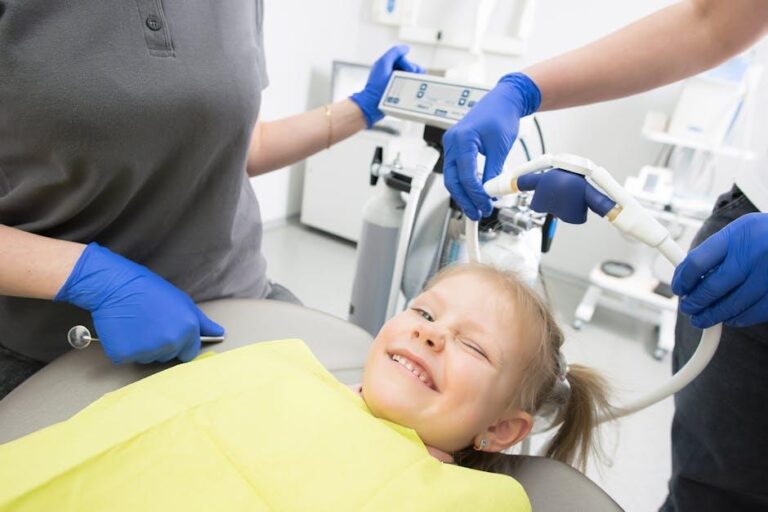1 in 3 Kids Has Dental Problems, Poll Finds – U.S. News & World Report
Recent polling data released by U.S. News & World Report reveals a concerning trend in pediatric oral health: nearly one in three children in the United States suffers from dental problems. This alarming statistic calls for increased awareness, proactive care, and policy action to protect the smiles of millions of American children. In this article, we will dive into the causes behind this dental crisis, common conditions affecting kids’ smiles, and practical tips parents can apply to promote better oral health from an early age.
Understanding the Scope of Pediatric Dental Problems
According to the poll, dental problems among children are not isolated cases but rather a widespread public health issue. The survey sampled thousands of families nationwide and found that approximately 33% of kids experience issues such as cavities, gum disease, or tooth sensitivity.
Key Dental Issues Affecting Children
- Dental cavities (tooth decay): The most common problem, often caused by poor oral hygiene and high sugar consumption.
- Gum disease (gingivitis): Inflammation of gums that can progress if untreated.
- Tooth sensitivity and enamel erosion: Often linked to dietary habits and improper brushing techniques.
- Emergency dental injuries: Such as chipped or knocked-out teeth, especially in active children.
Why Are Dental Problems so Common Among Kids?
The poll highlights several factors contributing to the prevalence of dental issues in children:
- Inadequate oral hygiene routines: Many children either don’t brush or floss regularly or do so incorrectly.
- High consumption of sugary foods and drinks: Frequent snacking on candy, soda, and processed foods increases risk.
- Lack of access to proper dental care: Socioeconomic barriers mean many families cannot afford routine checkups.
- Insufficient parental awareness: Some parents underestimate the significance of baby teeth health in long-term oral development.
Impact on Children’s Well-being
Untreated dental problems can lead to significant issues beyond just pain. Children with dental discomfort often experience difficulties eating, speaking, and concentrating, which can affect school performance and social interactions. Additionally, poor oral health in childhood tends to predict dental challenges in adulthood, making early intervention essential.
Benefits of Prioritizing Kids’ Oral Health
Ensuring proper dental care for children offers numerous advantages:
- Prevention of cavities and gum disease: Maintaining healthy teeth prevents pain and costly treatments.
- Improved self-confidence: Kids with healthy smiles feel better about themselves.
- Better overall health: Good oral hygiene reduces risk of infections that spread to other parts of the body.
- Long-term savings on dental care costs: Preventive care is more cost-efficient than managing advanced dental issues.
Practical Tips for Parents to Protect Their Children’s Dental Health
Parents can play a pivotal role in turning the statistics around by adopting a few simple habits:
- Establish a consistent brushing routine: Encourage brushing twice a day with fluoride toothpaste, supervised until children are about 8 years old.
- Teach proper flossing technique: Introduce flossing once two teeth touch, and assist younger children.
- Limit sugary snacks and beverages: Replace candy and soda with healthy alternatives like fruits, vegetables, and water.
- Schedule regular dental checkups: Children should visit the dentist every six months, beginning around their first birthday.
- Lead by example: Parents maintaining good oral hygiene motivate children to do the same.
Case Study: Success Story from a Pediatric Dental Clinic
At SmileBright Pediatric Dentistry, Dr. Amanda Reynolds shared a recent success story. A 7-year-old patient named Mia came in with multiple cavities and severe anxiety around dental visits. Through personalized care and education for both Mia and her parents, she developed strong oral hygiene habits. After six months, all cavities were treated, anxiety reduced, and Mia continues to maintain excellent oral health. This example underscores how early intervention and supportive care can drastically improve children’s dental outcomes.
Summary Table: Common Dental Problems and Prevention Strategies
| Dental Problem | Cause | Prevention Tips |
|---|---|---|
| Tooth Decay (Cavities) | Poor hygiene, sugary diet | Brush twice daily, reduce sugar |
| Gingivitis | Plaque buildup, inflammation | Floss daily, regular cleanings |
| Tooth Sensitivity | Enamel erosion, harsh brushing | Use soft toothbrush, avoid acidic foods |
| Dental Injuries | Accidents, sports injuries | Wear mouthguards, supervise play |
Conclusion: Taking Action for Healthier Smiles
The poll’s findings highlight a critical public health challenge — that 1 in 3 kids across the US has dental problems. Yet, this issue is not insurmountable. With greater awareness, consistent oral hygiene habits, dietary mindfulness, and timely professional care, parents and caregivers can help protect their children from dental diseases. Making children’s dental health a priority today paves the way for healthier, happier smiles tomorrow.
To stay informed on pediatric oral health topics and tips, bookmark our blog and subscribe to updates. Remember: healthy kids start with healthy smiles!


